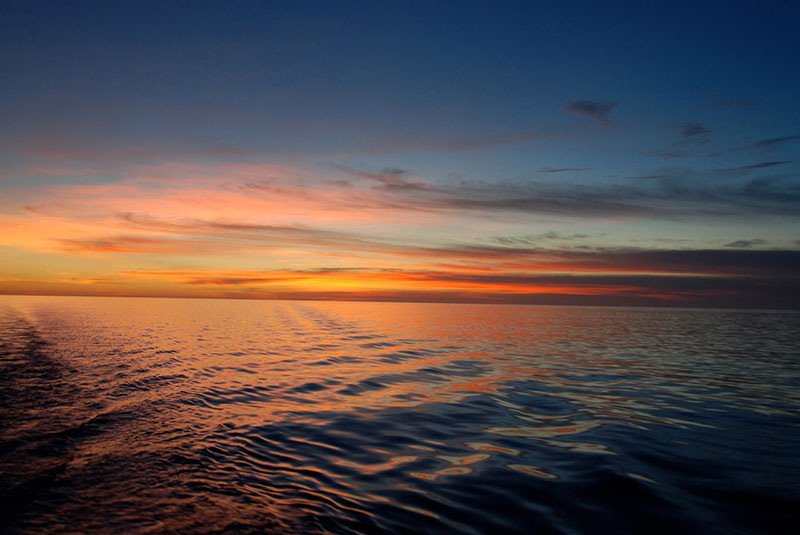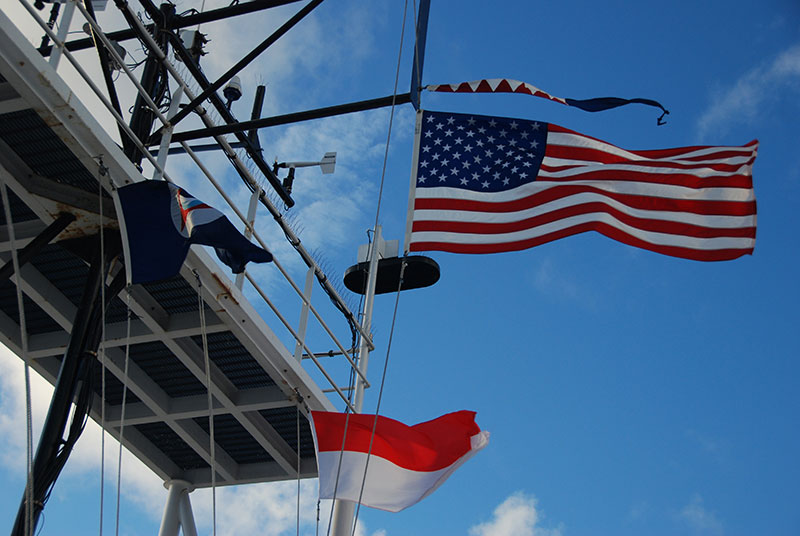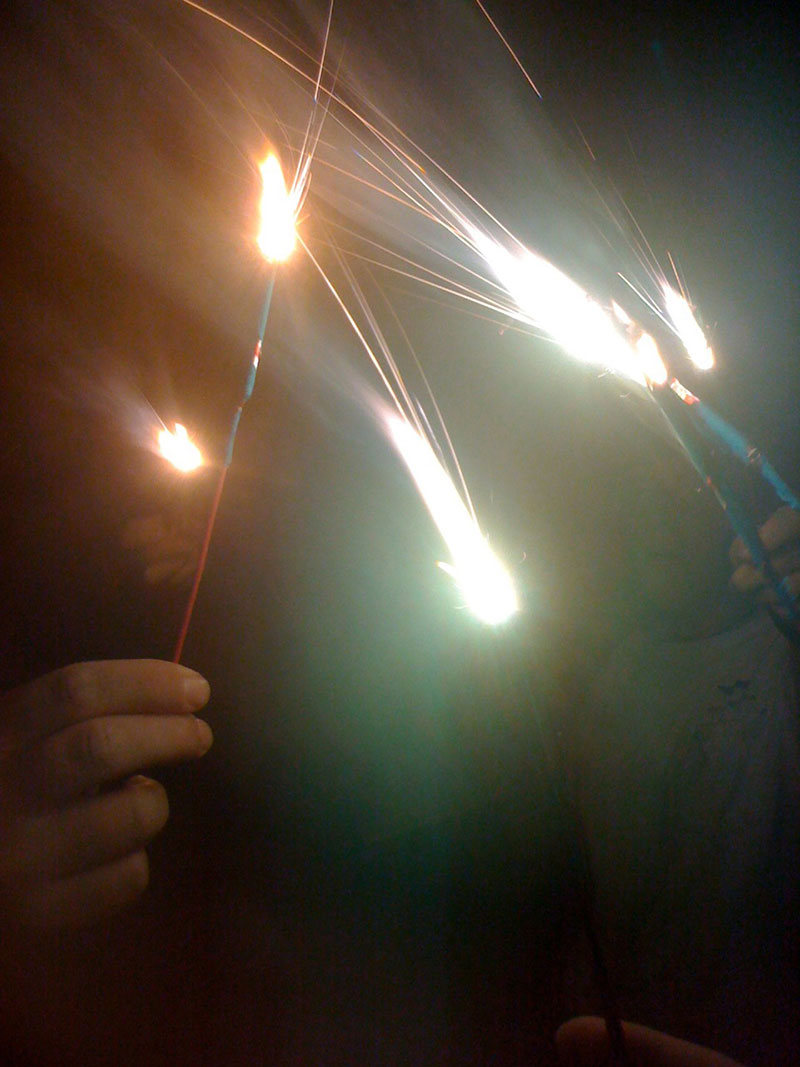
by Colleen Peters, Senior Survey Technician
Latitude: 5.5743 N
Longitude: 127.04248 E
July 4, 2010

The sunsets in the Celebes Sea have been remarkable. The light – oranges and pinks and reds – wraps around the whole ship, providing a 360-degree show. These are the nights that make being at sea a special experience. Image courtesy of the NOAA Office of Ocean Exploration and Research, INDEX-SATAL 2010. Download larger version (jpg, 589 KB).
In my opinion, ocean exploration is about 25 percent exhilaration and 75 percent perspiration. It is incredibly exciting to be on the cutting edges of technology and getting to look at areas of the world’s ocean that have never been observed before. However, what most people may not realize is how many days at sea it really takes to get those few good images, that one great map, and the dive that will change the course of history.
Being at sea is like living in a perpetual Tuesday. It’s not as bad as dragging yourself to the office Monday morning after the most amazing weekend away, nor is it like the anticipation of leaving work on a Friday afternoon with two whole days of freedom to relax and recharge still ahead of you. Tuesday is just after the start of the work week, but with many more days to get through to reach the next break. Ship's crew and mission personnel don't get to sleep in, have Sunday brunch, or enjoy a long weekend while at sea over a holiday. The only real significance of the weekend at sea are overtime pay for crew and a shortage of email since everyone ashore is off duty. Otherwise, I would never be able to keep track of what day of the week it is while underway.

When a vessel is underway, it is a requirement to fly certain flags. The first is the ensign—the flag of the vessel’s own country. Above the ensign is the commissioning pennant, a symbol of the command of the vessel. Below are the NOAA house flag (left) and the flag of the Republic of Indonesia (right), which represents the country whose waters we are operating in. Image courtesy of the NOAA Office of Ocean Exploration and Research, INDEX-SATAL 2010. Download larger version (jpg, 4.5 MB).
One would think that with only 224 feet in length, the 46 persons on board would be constantly bumping into each other left and right. Well, to some extent, some of us are, but there are several occasions where one crew member might not see another for days due to opposing watch and meal schedules. Most days, I only see my roommate during meals and between watches because she is in a different department and her work keeps her in other areas of the ship. Although we all work together to make our contribution to the success of the mission, not all of our paths cross on a daily basis.
One thing we do here on NOAA Ship Okeanos Explorer to break up the monotony is to celebrate special occasions. Birthdays, milestones, and holidays can be an opportunity for the whole crew to get together and participate in a single activity as a group.
As we go about our day on the ship and contact our loved ones back home, we hear about the barbecues, parades, and fireworks on this day, the 4th of July, we cannot help but be slightly disappointed to not be able to participate in the traditional festivities. However, we try our best, with what we have available, to make the most of it.

Although fireworks are a safety hazard on the ship, sparklers are reminiscent of typical 4th of July celebrations we are used to back home and provided some entertainment if only for a few minutes. Image courtesy of the NOAA Office of Ocean Exploration and Research, INDEX-SATAL 2010. Download larger version (jpg, 682 KB).
This year, since we are underway, we tried to have a barbeque and sit out on deck for dinner – comfortable enough since we are in the tropics, however cancelled due to squalls. Instead, we took our picnic meal and ate inside just like every other day – in our respective shifts. Afterward, we lit sparklers and had a few laughs as we fumbled in the dark to light them. We cannot ignite our own fireworks because it is a safety hazard, and surveying in foreign waters, we are not likely to see any.
It just isn’t the same. Exploring is an amazing experience, but some days, there is no place like home.
Not every day at sea is as thrilling as our highlight videos may make it seem. Sometimes it’s simply about planning lines, killing dots (cleaning data), cooking food, and changing the oil in the engines. Like everyone back home, we have less interesting days too. Tomorrow is a new day, and the potential and possibilities are boundless...
...but it will still feel like Tuesday.